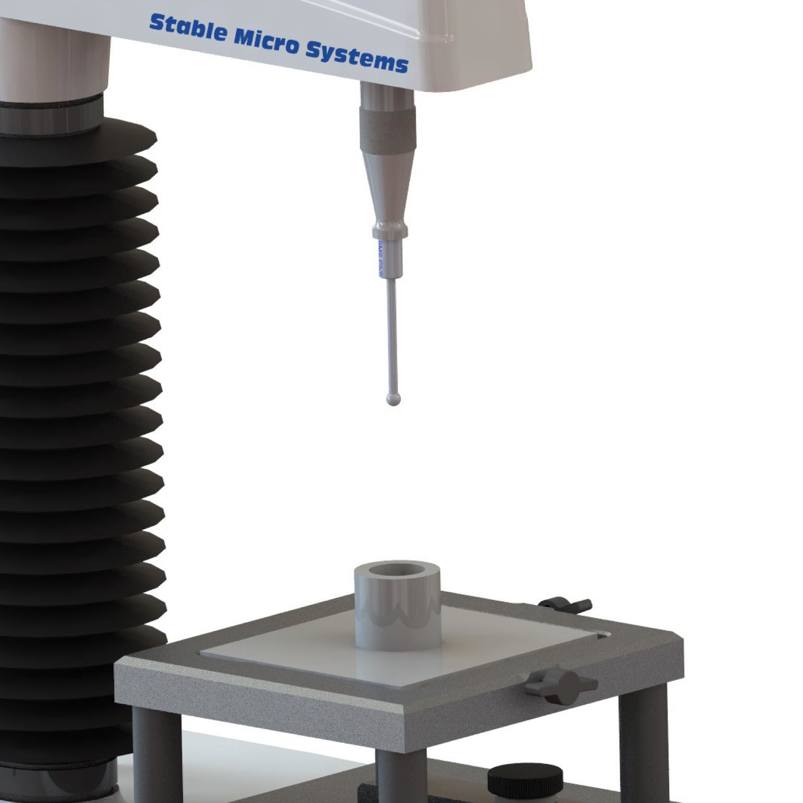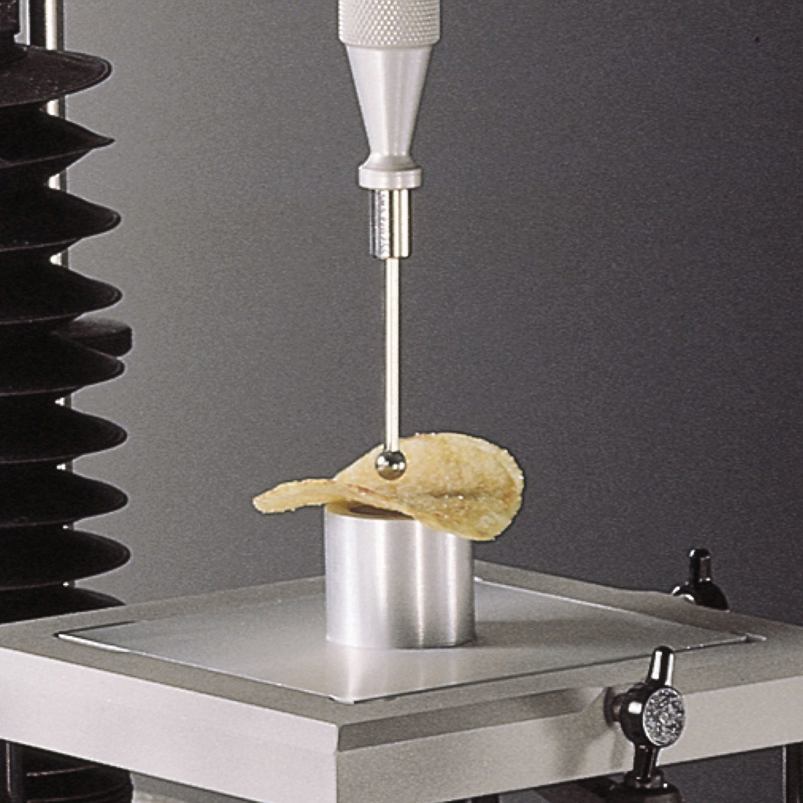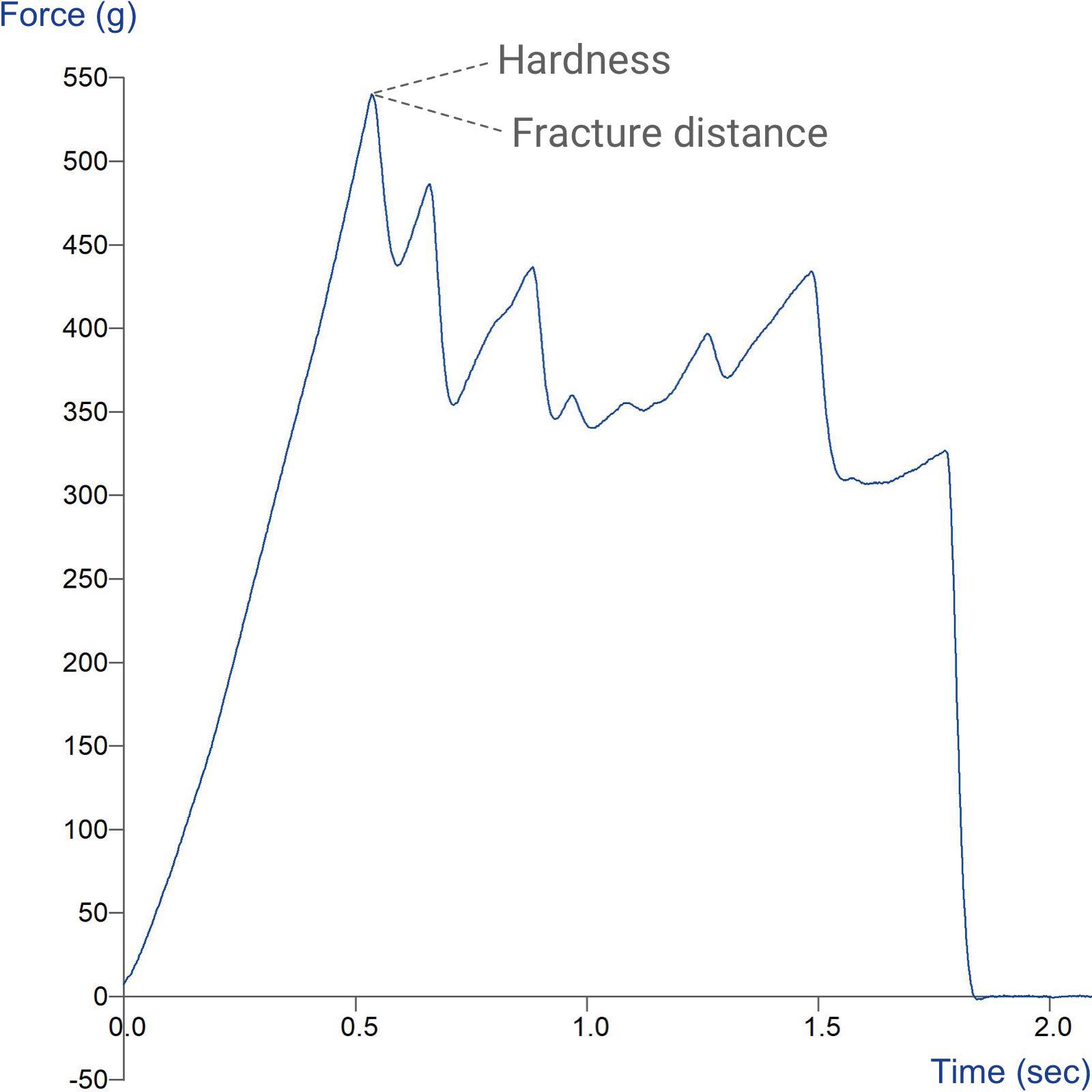Product overview
Crisp or chip fracturability refers to how easily a snack like a potato chip or a crispy cracker breaks or fractures when bitten. This characteristic is important for several reasons, particularly related to sensory perception, product quality, and consumer satisfaction. Here's why crisp/chip fracturability matters:
Texture and mouthfeel: The fracturability of a crisp or chip directly impacts its texture and mouthfeel. Consumers often associate a satisfying eating experience with a distinct "crunch" or crispness. The sensation of the product breaking crisply in the mouth adds to the enjoyment of consuming such snacks.
Sensory perception: The sound and feeling of a crisp or chip fracturing create sensory cues that influence how people perceive the product's freshness and quality. A loud and satisfying crunch can signal freshness, while a lack of crispness might be interpreted as staleness.
Quality perception: Crispness and fracturability are often associated with high-quality snacks. Consumers generally expect chips and similar snacks to be crispy, and any deviation from this expectation can negatively impact their perception of the product's quality.
Flavour release: The fracturing of a chip or crisp releases flavour compounds trapped within the product. The combination of the breaking sound, the texture, and the immediate burst of flavour contributes to the overall taste experience.
Aesthetic appeal: Chips or crisps with proper fracturability maintain their structural integrity and appearance, enhancing their visual appeal. When a product fractures cleanly and uniformly, it reflects attention to detail in manufacturing and adds to the overall aesthetic quality.
Consumer satisfaction: Achieving the right fracturability ensures that consumers receive the expected sensory experience from the product. Satisfying the sensory expectations of consumers contributes to their overall satisfaction and likelihood of repurchasing.
Market differentiation: Crispness and fracturability can be points of differentiation in a competitive market. Products that stand out due to their unique texture and crispness might attract a dedicated customer base.
Production and packaging: Understanding and controlling fracturability is crucial during the manufacturing and packaging processes. Consistent fracturability ensures that products are uniform in quality and meet consumer expectations.
Brand reputation: Consistently delivering products with the desired fracturability builds trust and a positive reputation for a brand. Consumers are more likely to trust brands that consistently provide products with the desired taste and texture.
Innovation and research: Food scientists and manufacturers continually work to improve the fracturability of snacks by experimenting with ingredients, formulations, and processing techniques. This ongoing research leads to the development of innovative products that cater to changing consumer preferences.
This attachment is used to measure the fracturability of snack foods and potato crisps (known in some countries as chips) by means of a penetration test. It allows simple location and quick alignment of the sample. A 0.25" diameter spherical probe moves down onto a sample, which is centrally located over a circular support, up to the point of fracture.
Normally a batch of 12 crisps are individually tested and the average of the 12 maximum peak force values are calculated to give a measure of fracturability.
How does the Crisp Fracture Support Rig work?
Ideal sample form
A solid brittle material which can be positioned over a holed support in order to measure its failure by centrally pressing down with a ball probe.
Benefits and limitations
- Sample needs to be self-supporting and able to sit over a hole
Technical information
Installation
Full installation instructions are provided within the Education Zone of the latest Exponent/Connect software version and on the technical information sheet accompanying this product.
Chemical compatibility
Stable Micro Systems probes and attachments are commonly made from four materials: anodised aluminium (AA6082 T6), stainless steel (316 T), Delrin (acetyl copolymer) and Perspex (polycarbonate).
In general use, probes and attachments made from these materials will be suitable for testing food products and inert non-food materials.
The four materials listed above are not universally resistant to all types of chemicals and as such the compatibility of the probe/attachment material with the product (to be tested) must be established to prevent damage to the probes and attachments. If the compatibility of the product with the probe is unknown to the customer then the chemical information about the product (Material Safety Data Sheet or Product Data Sheet) should be submitted to Stable Micro Systems. Stable Micro Systems will then assess the suitability of the probe/attachment material for use with the product and advise accordingly. If this advice is not sought then Stable Micro Systems will not accept liability for probes/attachments damaged by chemical attack from the product being tested.
Cleaning and maintenance
All probes and attachments may be cleaned in warm (or hand hot) water using a mild detergent. A soft brush may be used but abrasive cleaning aids should be avoided. Stable Micro Systems products should not be microwaved or cleaned in a dishwasher.
Screw threads should be lightly lubricated after drying using a light lubricant, e.g. petroleum jelly, mineral oil. This will aid the fitting and unscrewing of the item. Each component of a probe or attachment should be wrapped separately when stored, to avoid scratching or chipping. This will safeguard against any unnecessary damage to the accessory.



